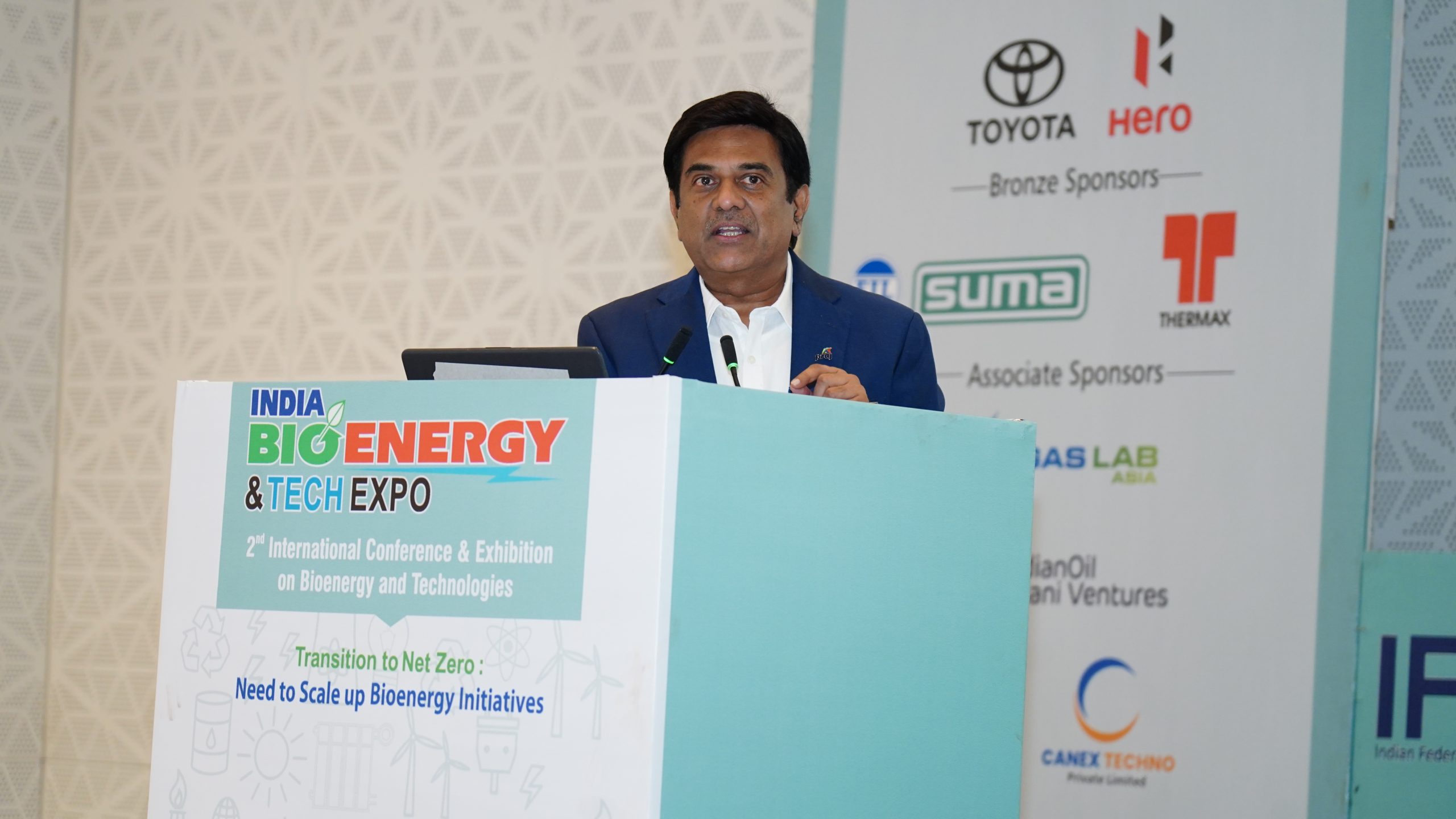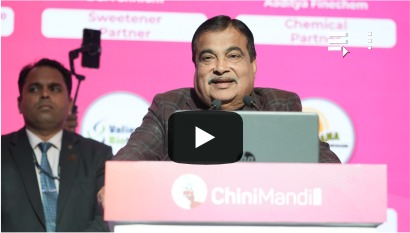In an insightful interview with ChiniMandi, Atul Mulay, President and Global SBU Head – Bio Energy at Praj Industries Limited, and Member & Chairman of the Bio-Economy Committee at the Indian Federation of Green Energy (IFGE), stated that for India, building a diversified green fuel portfolio is not a choice but a strategic imperative.
He emphasised the importance of prioritising the timely verification and certification of low-carbon intensity (CI) feedstocks to strengthen the Bioenergy movement in the country.
Q1. Having chaired several sessions and led key discussions at IBET 2025, what would you say were the main achievements of the event?
IBET 2025 achieved several tangible outcomes beyond great discourse. First, it successfully assembled the entire bioenergy ecosystem — farmers, feedstock aggregators, technology providers, OEMs, automakers, financiers, policymakers and researchers — under one roof, enabling solution-oriented dialogue.
Second, it accelerated consensus on strategic priorities for better utilisation of the ethanol capacity created and identifying alternate uses for scaling up bioenergy momentum in India, while also finding higher-value end-uses viz. Sustainable Aviation Fuel (SAF/ATJ), higher blends for the transportation sector, flex fuel vehicles, and applications beyond mobility.
Third, the event catalysed concrete policy momentum — illustrated by developments like permissive export rules for 2G ethanol and movement on CAFE norms for FFVs— that can translate into market pull and economic growth.
Q2. The draft CAFE III norms were announced by the Government. Do you see this as a victory for the clean fuel campaign?
Absolutely. The draft CAFE-III framework explicitly creates incentives (including set-offs/super-credits) for flex fuel vehicles. It offers relief mechanisms for sub-four-meter vehicles, making compliance realistic for the auto sector. These measures create credible demand signals for higher blends by linking vehicle regulation to fuel policy, which is precisely how we convert policy intent into market action. That said, success will depend on timely finalisation, clarity on how ethanol-related credits are structured, and alignment across stakeholders so that vehicle standards, fuel quality, and distribution readiness move together.
Q3. Praj Industries has launched BioVerseTM, which looks beyond just ethanol. What is the significance of green fuel like IBA, SAF, CBG, etc., from the Indian context?
From India’s perspective, building a diversified green fuel portfolio is not optional — it is strategic. Bio isobutyl alcohol will decarbonise the energy-intensive diesel segment, SAF addresses the aviation sector, which has few other abatement options, and CBG (Compressed Biogas) offers a distributed, circular solution for road and non-mobility applications while generating rural livelihoods and tackling waste. Together, these fuels reduce import dependence, strengthen domestic industry, and enable targeted decarbonisation across sectors.
Praj BioVerse™ goes far beyond — it is a movement to create a collaborative ecosystem where farmers, innovators, automakers, policymakers, and technology providers come together to accelerate Bharat’s transition to a resilient, Swadeshi bioeconomy.
Q4. India has successfully achieved E20 much before the schedule. What should be the next milestone from the blending point of view? Are higher blends safe for our existing auto fleet?
Achieving E20 ahead of schedule is a major policy and implementation success — a true example of what coordinated action between government, industry, and other stakeholders can achieve.
It is clear from all the discussions held at the event that the immediate focus should be on building consumer confidence and awareness about the ethanol blending program. The end users must understand the economic, environmental, and national benefits of biofuels. Sustained communication efforts can help dispel myths, highlight benefits, and make the transition smoother.
At the same time, India needs a clear roadmap and action plan for introducing higher ethanol blends. All stakeholders — from policymakers and oil companies to vehicle manufacturers and consumers — must be aligned and act with a shared sense of urgency, especially in the current global energy context.
Moving forward, attention must be given to rolling out vehicles compatible with higher blends, ensuring proper fuel labelling, and developing retrofit guidelines and consumer advisories for vehicles where needed.
Finally, continued collaboration among OEMs, testing labs, and regulators will be key to ensuring that higher blends are both technically safe and publicly trusted.
Q5. We talked about SAF at length at the event. Do you think India can replicate the success of EBP in SAF on the time scale and higher blends?
Yes, I believe India can replicate the success of the Ethanol Blending Programme (EBP) in SAF, provided there is continued, coordinated effort among all stakeholders.
The government’s indicative target of 1% SAF blending by 2027 is a good starting point — it creates a clear demand signal that can attract investments. Encouragingly, OMCs and refineries have already begun co-processing modules using Used Cooking Oil (UCO), demonstrating both intent and technical readiness.
India has the feedstock potential and technological capability to reach even double-digit SAF blending levels in the future. The recent growth in 1G ethanol capacity further strengthens the foundation for scaling SAF.
Most importantly, the timely verification and certification of low-carbon intensity (CI) feedstocks must be prioritised. A robust certification and sustainability accounting framework will be essential to build trust and enable both domestic use and export opportunities.
Q6. There has been a news report which talked about capping further investments in grain-based distilleries. Your take on that.
It is important to note that the grain used for ethanol production today comes from damaged food grains (DFG), maize, and surplus rice stocks that are released only after meeting food security requirements. These feedstocks not only help meet near-term ethanol demand but also support farmer incomes and reduce post-harvest losses.
A more balanced approach would be to optimise existing capacity — by promoting higher ethanol blends, flex-fuel vehicles (FFVs), using ethanol as feedstock for SAF, and exploring non-mobility applications like gensets, mobile towers etc.
This will ensure that the socio-economic and environmental benefits of the blending programme extend beyond EBP, while fostering inclusive and sustainable growth.
Q7. How can India extend the success of the Ethanol Blending Programme (EBP) to the diesel segment?
The diesel segment offers a significant decarbonisation opportunity, given its large consumption share and high particulate and CO₂ emissions. Replicating the EBP model here would deliver strong environmental and economic gains. It requires a tailored approach, since diesel and ethanol are not naturally compatible.
Ethanol cannot be blended directly with diesel beyond very small proportions because it needs an emulsifier, and such blending changes the fuel’s classification from Class II to I due to a lower flash point. This limits its commercial viability. A more practical and sustainable pathway is isobutyl alcohol (IBA), a bio-based molecule that can blend with diesel seamlessly without the need for an emulsifier, while retaining the fuel class.
For the past two years, ARAI, Praj, and OMCs have been jointly evaluating this route. Bio-IBA can be blended up to 10% with diesel, maintaining fuel quality and performance standards. This development could be transformative — enabling cleaner combustion, lowering emissions, and creating a new demand stream for biofuels in the diesel segment.
With policy alignment and certification frameworks, Bio-IBA blending can become India’s next success story — quite similar to how ethanol forms the backbone of Brazil’s transport fuel economy.
Q8. Now that the export of 2G ethanol has been permitted, what advantages do you expect the producers and the country to gain from it?
Discussions at IFGE IBET 2025 reinforced that export permission for 2G ethanol is truly transformative. It opens new revenue streams and global markets for Indian producers, enhancing project bankability and investor confidence. It also signals the international competitiveness of India’s advanced biofuel technologies and encourages global collaboration.
By creating alternative offtake avenues, exports can reduce pressure on the domestic market, stabilise prices, and support bolt-on 2G capacity in existing 1G plants. Strategically, this strengthens India’s position in global low-carbon fuel markets. Over time, export-linked learning and revenues are expected to accelerate cost reductions and technology maturation domestically.
Q9. We are at an important juncture regarding the transition towards biofuels. As technology providers, what should be your charter of demands to the Government to ensure there are no roadblocks?
At the outset, I must commend the Government for its clear policy vision, proactive targets, and sustained support — my colleagues in the industry fully share this view. Continued ecosystem building, with active commitment from all stakeholders, is key to success.
As technology providers, our charter to the Government should be practical, focused, and delivery-oriented. We advocate for policies that promote Swadeshi technologies and the indigenisation of solutions tailored to Indian feedstocks and conditions. With the right regulatory and commercial support, the industry can translate policy intent into rapid deployment at scale, advancing energy security, supporting rural incomes, and accelerating decarbonisation across sectors.
Q10. How can we build on the success of EBP 20 to maximise socio-economic benefits, while simultaneously developing ethanol capacity and creating robust markets for timely impact?
At IFGE IBET 2025, many discussions highlighted that building on the success of EBP 20 requires a coordinated approach — simultaneously expanding capacity and creating robust markets to fully realise socio-economic benefits. I think we all agree that scaling ethanol production must go hand-in-hand with diverse demand streams, including higher blends in targeted fleet segments, SAF (alcohol-to-jet), Bio-IBA for diesel blending, and other non-mobility applications.
Consumer awareness and confidence are critical — labelling, quality assurance, and OEM support will drive adoption of higher blends. Policy clarity, long-term offtake mechanisms, and targeted incentives are key to unlocking timely socio-economic benefits while advancing India’s self-reliant and sustainable bioeconomy.

















